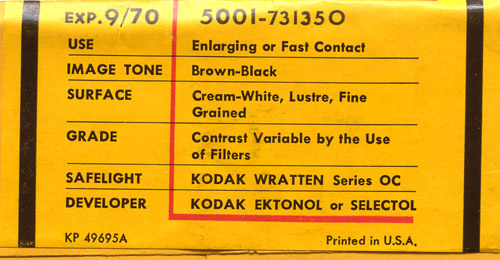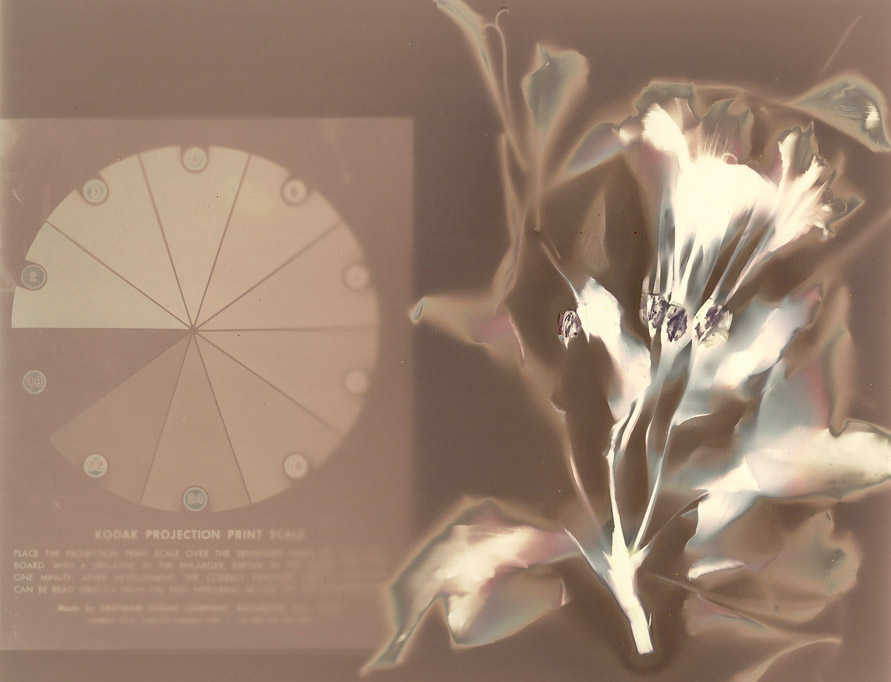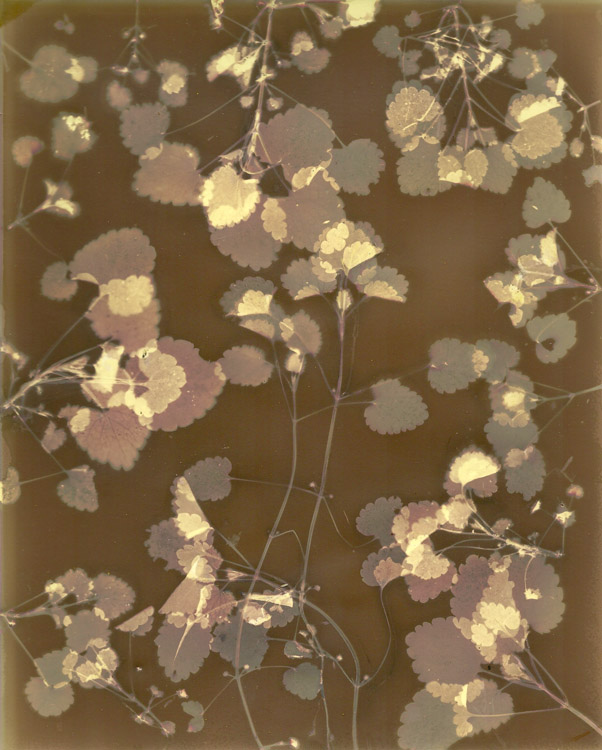
After having discovered that only 2 out of 9 packages of photographic paper had any life to them during my latest 3 day B & W darkroom siege, I had to find out something to do with all that paper other than toss it out.
The sheets of paper, some of which I had purchased when I was in Camera Club in High School,

were exhibiting age fog, some to the highest degree. In the least affected cases, the white borders of a print had just a touch of a light grey; test chunks from others developed to black without any exposure to light! Just cut a snip off and dropped it in the developer and it turned dark!
I couldn’t let all that stuff go to waste, so I researched one of my favorite photographic forums, Alternative Photography. There I found an article by Marek Matusz about Lumen Prints, just using the old paper in a print out mode; simply laying objects on the paper and bathing them in sunlight or Ultraviolet.

This worked OK, as all the silver halides will reduce to silver eventually, solely by the action of light. Silver chloride as used in the earliest Photogenic Drawings of Fox Talbot prints out the easiest, and the predominately silver bromide developing out papers do so quite a bit slower, and silver iodide is the slowest of the three typically in photographic emulsions.
I tried this approach and it took forever to get the paper to turn to that nice chocolaty brown of the Salted Paper process that I know and love. (Link to my Salted Paper Web Gallery) But also linked to the Lumens was the Chemilumens – combining chemigrams and lumen prints as developed by Fabio Giorgi.
I soaked my old paper in a solution of Ferric Ammonium Citrate and Tartaric Acid, that came from a Photographers’ Formulary Van Dyke Process kit from which I had appropriated the silver nitrate, and it breathed new life into the old papers.

The papers, both of the Lumens and Chemilumens types, were fixed 30” to 60” in the dilute 3% bath as advised by Christopher James in his authoritative tome, and relieved of the residual thiosulfate in Kodak Hypo Clearing Agent followed by a 5’ to 10’ running water wash.
The Ferric Ammonium Citrate (FAC) is an interesting photo-catalyst; in the cyanotype, it changes potassium ferricyanide into potassium ferrocyanide, Prussian Blue, which gives the process the nickname blueprint; and in the Van Dyke it reduces silver nitrate to silver. It should come as no surprise that it can reduce the silver halides in the photo paper to silver, and breath new life into out of date, age-fogged photo paper! Wonder what it might do to fogged holographic plates?